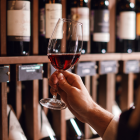What the withdrawal of another Classé A name means for Saint-Émilion’s investment outlook
Chateau Angelus dealt the Saint-Émilion classification system another blow last week when it announced its withdrawal from the 2022 classification process. This marks the third Premier Grand Cru Classé A château to pull out of the upcoming reclassification after Chateau Ausone and Chateau Cheval Blanc made similar announcements last July. With the loss of these three estates, Chateau Pavie remains the only name currently seeking a renewal of its Premier Grand Cru Classé A rank.
This clearly poses a problem for the Saint-Émilion classification, which has been dogged by controversy now for several years. The 2006 and 2012 classifications were subject to legal challenges. More recently, Angélus co-owner Hubert de Boüard was fined by the Bordeaux District Court for what it judged was an ‘illegal taking of interest’ in the 2012 classification. Château Angélus cited these matters in its decision to withdraw, saying the classification’s viability “does not seem to us to be assured, and the advantages of which do not make up for the risks of unjust attacks.”
Despite losing three of four Classé A names, Saint-Émilion looks to press on with the 2022 reclassification. We’ve written before how more châteaux could enter the top tier with Chateau Figeac almost certain to obtain a well-deserved promotion. The loss of three current Classé A châteaux could raise the prospects of other promotions with Château Canon and Chateau Troplong Mondot among the names to watch. This scenario would only add confusion, creating an unclassified “top layer” of Châteaux Angélus, Ausone, Cheval Blanc with Chateau Pavie and other promoted names forming the official Classé A benchmark grouping.
Investment implication: Brand recognition, not classification, drives performance
In the near term, the controversy could mute the performance potential of Saint-Émilion wines in the secondary market until there is more certainty regarding the status of these leading châteaux and the Saint-Émilion system as whole.
We may already be seeing some underperformance in the region. Liv-ex reported how its Right Bank 100 sub-index was the weakest performing segment of the Bordeaux 500 in 2021 (+6.0% vs Bordeaux 500 +10.47%). And within this Right Bank 100, Pomerol wines outperformed Saint-Émilion. Of the 10 châteaux within the Right Bank 100, Angélus (4.2%) and Troplong Mondot (4.0%) formed the top Saint-Émilion wines but ranked fifth and sixth, behind four Pomerol producers.
However, we don’t expect any significant long-term impact on prices and do not view the situation as a reason to shift away from investments in these fantastic Saint-Émilion wines. The brand reputation and wine quality of Châteaux Angélus, Ausone and Cheval Blanc is well established among consumers and wine investors around the world. Demand should remain just as strong into the future even without the Classé A badge.
The same goes for Château Pavie. Even though some may view its Classé A status as less significant now, its own brand and wine remain untarnished, so we don’t expect any long-term price dislocation. Château Figeac, whose promotion has been widely anticipated, will also remain an internationally sought-after wine.
Promotion power could wane for lower tiers
The disruption to the classification could make a greater impact on the market for wines lower down the Saint-Émilion scale. Names currently in, or potentially entering, the Premier Grand Cru Classé B rank may not enjoy the same level of recognition from an international audience as the icons at the top. The classification system helps promote their brands by their association to the top wines of the appellation. Without all the top names in the Classé A benchmark for comparison, the Premier Grand Cru Classé B as well as the simple ‘Grand Cru’ ranking below lose some of their relevance and power.
Again, we do not expect any significant repricing of the market. However, the classification’s effectiveness at promoting these second and third tier producers could diminish. Ultimately, brand awareness and wine quality will remain the primary drivers of market pricing, and a select producer-by-producer analysis will become more essential for determining the market outlook if the importance of the ranking wanes.
It will also be essential to monitor how the situation progresses in the future. Although it is likely too late to revamp the 2022 classification, the Saint-Émilion body could review the process and criteria for future classifications (next due in 10 years’ time). How they reengage with the departed chateaux and whether they convince them to return would again impact the market for wines at different ranking levels.






